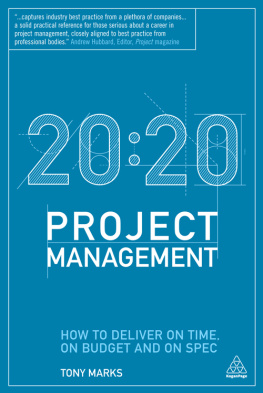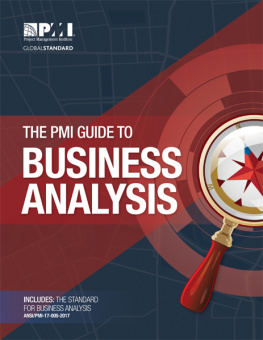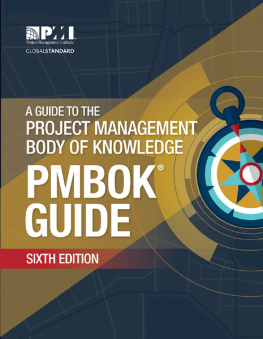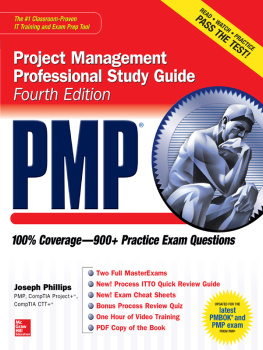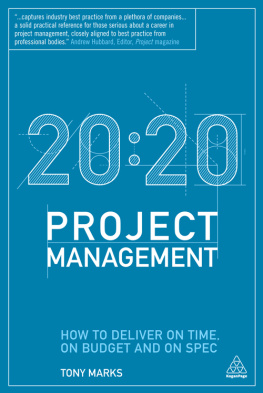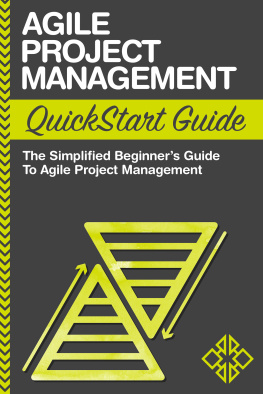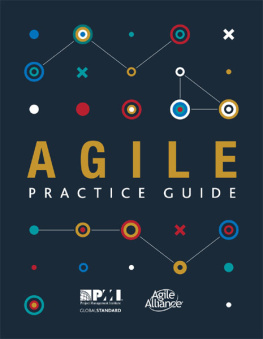
This book is printed on acid-free paper.
Copyright 2005 by John Wiley & Sons, Inc. All rights reserved Published by John Wiley & Sons, Inc., Hoboken, New Jersey Published simultaneously in Canada
No part of this publication may be reproduced, stored in a retrieval system, or transmitted in any form or by any means, electronic, mechanical, photocopying, recording, scanning, or otherwise, except as permitted under Section 107 or 108 of the 1976 United States Copyright Act, without either the prior written permission of the Publisher, or authorization through payment of the appropriate per-copy fee to the Copyright Clearance Center, Inc., 222 Rosewood Drive, Danvers, MA 01923, (978) 750-8400, fax (978) 750-4470, or on the web at .
Limit of Liability/Disclaimer of Warranty: While the publisher and author have used their best efforts in preparing this book, they make no representations or warranties with respect to the accuracy or completeness of the contents of this book and specifically disclaim any implied warranties of merchantability or fitness for a particular purpose. No warranty may be created or extended by sales representatives or written sales materials. The advice and strategies contained herein may not be suitable for your situation. You should consult with a professional where appropriate. Neither the publisher nor author shall be liable for any loss of profit or any other commercial damages, including but not limited to special, incidental, consequential, or other damages.
For general information on our other products and services or for technical support, please contact our Customer Care Department within the United States at (800) 762-2974, outside the United States at (317) 572-3993 or fax (317) 572-4002.
Wiley also publishes its books in a variety of electronic formats. Some content that appears in print may not be available in electronic books. For more information about Wiley products, visit our web site at www.wiley.com.
Library of Congress Cataloging-in-Publication Data:
Rakos, John J., 1946
The practical guide to project management documentation / John J. Rakos, with Karen Dhanraj [et al.].
p. cm.
Includes bibliographical references and index.
ISBN 0-471-69309-X (cloth)
1. Project management. I. Dhanraj, Karen. II. Title.
T56.8.R35 2004
658.404dc22
2004009415
This book is dedicated to my wife, Marie, who always helps me write but rarely gets credit for it.
John Rakos
Contents
Pages
List of Illustrations
- Preface
- Chapter 3: Project Charter
- Chapter 5: Project Plan
- Chapter 8: Quality Management Plan
- Chapter 9: Procurement Plan
- Chapter 11: Project Meetings and Reports
- Chapter 16: Post-Project Report
List of Tables
- Introduction
- Chapter 2: Business Case
- Chapter 3: Project Charter
- Chapter 4: Proposal
- Chapter 5: Project Plan
- Chapter 6: Communications Plan
- Chapter 7: Risk Management Plan
- Chapter 8: Quality Management Plan
- Chapter 9: Procurement Plan
- Chapter 10: Acceptance Test Plan
- Chapter 11: Project Meetings and Reports
- Chapter 12: Risk Control Report
- Chapter 13: Quality Assurance and Quality Control Reports
- Chapter 15: Acceptance Report
- Chapter 16 Post-Project Report
Preface
Purpose of This Book
Most of the deliverables in the project management process are documents. Therefore, it is imperative to produce these documents correctly.
Many books have been written on project management. All those books refer to project documents, and most of them outline the major documents required to produce a project. However, those books rarely include detailed examples of those documents, and we have not yet seen one in which electronic versions of the documents are available to use as templates.
This book therefore will help the reader produce excellent project documentation by providing descriptions and detailed examples of project management documents.
Nonpurpose of This Book
It is not our intent to teach the reader project management. There are many excellent texts in this field (do a search on the Web for Project Management, starting with www.pmibookstore.org). In fact, the reader must be familiar with project management basics to write the documents detailed here.
Origins of This Book
The primary author, Professor John Rakos, teaches project management to the Master of Business Administration class at the University of Ottawa. This twelve-week class covers every aspect of project management. The students have twelve group assignments to complete, consisting mainly of project documents. One of the groups in a recent class did such an excellent job of producing those documents that we thought it worthwhile to publish them. The authors of this book are therefore John Rakos, assisted by MBA students Karen Dhanraj, Laverne Fleck, Jim Harris, Steven Jackson, and Scott Kennedy.
Organization
The book is divided into four parts based on the major project phases defined by the Project Management Institutes A Guide to the Project Management Body of Knowledge (PMBOK Guide). These phases are Initiation, Planning, Execution and Control, and Closing. Each phase produces one or more documents. Each section of the book is subdivided into chapters, with one chapter dedicated to each document type. Therefore, these documents appear in the same chronological order in which they are produced during the implementation of the project.
For each type of document there are two parts: discussion and example. In the discussion we explain the purpose, author, timing, and other attributes of the document. We give the outline of each section of the document and explain the content, pointing out any problem areas to beware of. We then present an actual detailed example of the document.
The Case Study Project
The documents are based on an actual project: the development of a water theme amusement park to be constructed in Ottawa, Canada (see ). Although the documents are true to the concept of managing the construction of the water park, the actual players, figures, estimates, events, and problems are fictitious.
To better understand the examples, the following information is offered. Ottawa is the capital of Canada, located in the province of Ontario. OttawaCarleton is the former name of the regional municipality managing all of Ottawa and its surrounding suburbs. Nepean (pronounced Nipea-an) is a suburb on the west side of Ottawa. The National Capital Commission (NCC) is a government body with broad powers over the types of development that are permitted in the Ottawa area. KLSJ Consulting is a fictitious firm created by the students (Karen, Laverne, Steve, Scott, and Jim), and Carlington Aquatic Parks (CAP) is the actual company created by the clients who had the original idea to build a water park.

Ottawa, Canada.
In this fictitious scenario, the project was started with CAP developing the Project Concept and Project Charter in late 2002, followed by a bidding process for a prime contractor. The contract was won by KLSJ, which then was hired to deliver a completed water park to CAP by spring 2005. Most of the example documents are ones that KLSJ would have had to create either for the client or for internal management.
Next page

